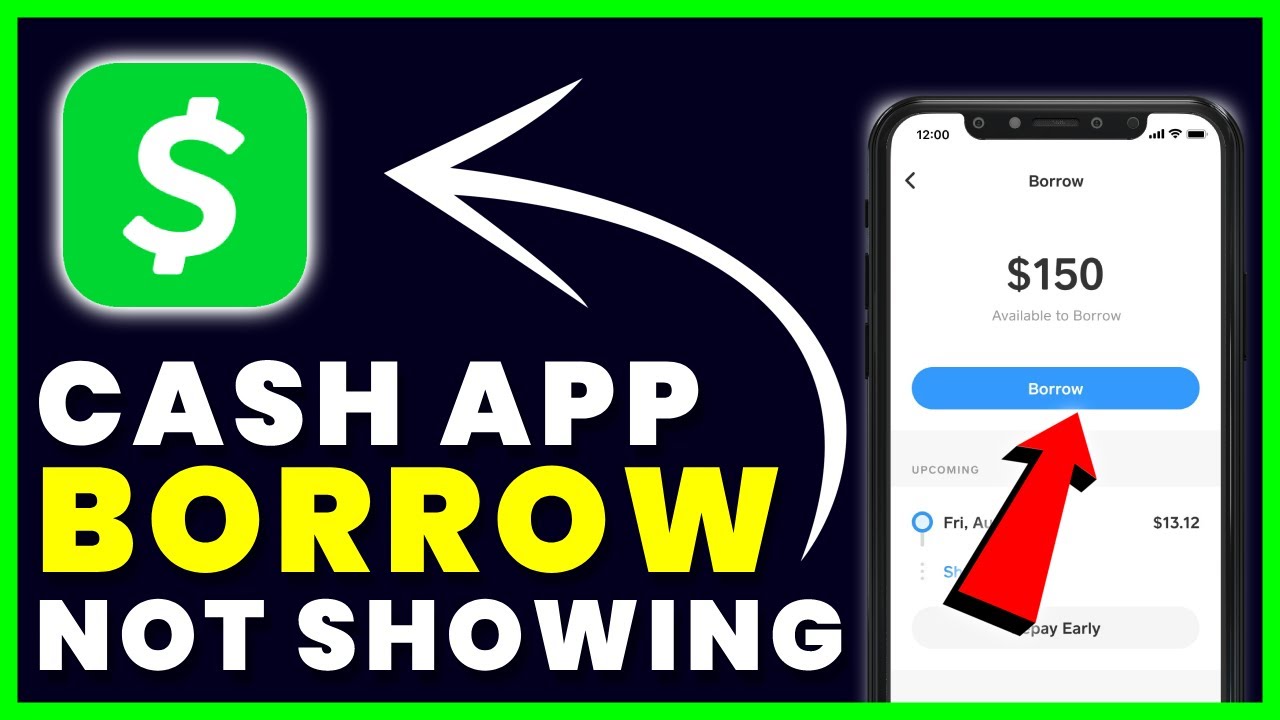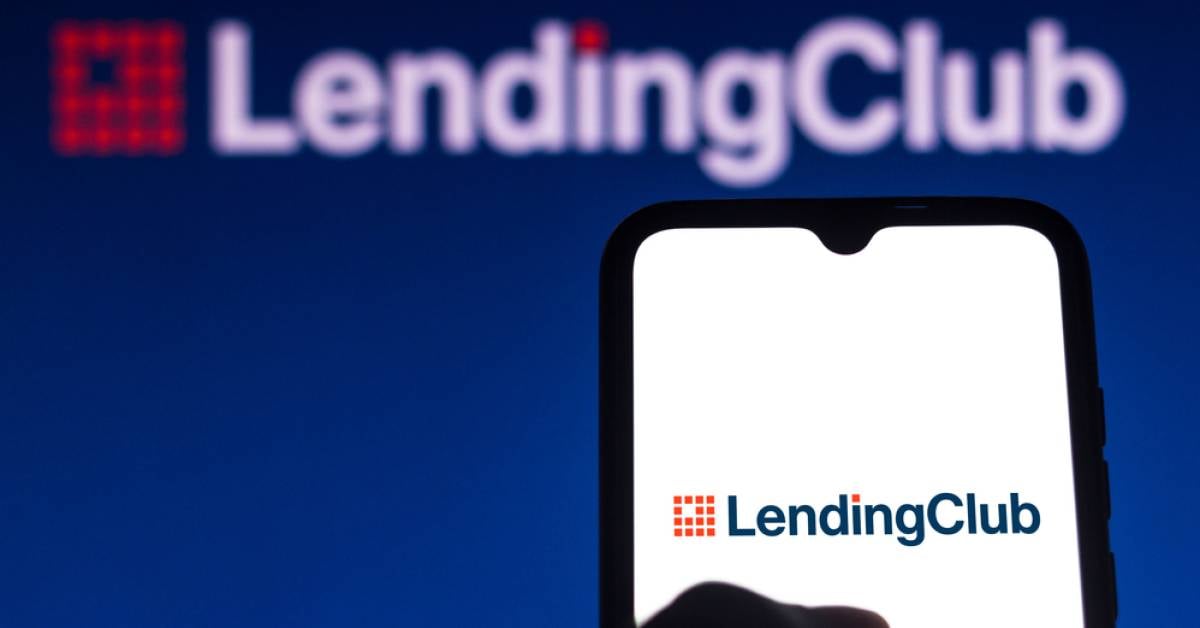Introduction
Peer-to-peer lending, also known as P2P lending, is a modern financial innovation that has revolutionized borrowing and investing. This form of lending allows individuals to directly lend money to borrowers without the need for traditional banks as intermediaries.
Unlike traditional banking, where borrowers must go through extensive credit checks, paperwork, and high interest rates, peer-to-peer lending offers a more streamlined and efficient borrowing process. It provides borrowers with access to fast funding at competitive interest rates, while offering investors the opportunity to earn attractive returns on their investment.
With the advent of technology and online platforms, peer-to-peer lending has gained significant popularity in recent years. It has created an alternative lending marketplace where individuals can borrow or invest, bypassing traditional banking institutions.
In this article, we will delve deeper into how peer-to-peer lending works, the benefits and risks involved, factors to consider when using P2P lending platforms, and how it compares to traditional banking. We will also explore the future of peer-to-peer lending and its potential impact on the financial industry.
Whether you are a borrower looking for a loan or an investor searching for investment opportunities, understanding the ins and outs of peer-to-peer lending can help you make informed decisions that align with your financial goals.
So, let’s explore the world of peer-to-peer lending and discover how this innovative platform is changing the way we borrow and invest.
Definition of Peer-to-Peer Lending
Peer-to-peer lending, also known as P2P lending or social lending, is a method of borrowing and lending money directly between individuals without the involvement of traditional financial institutions like banks or credit unions. This form of lending is facilitated through online platforms that connect borrowers with lenders.
In a peer-to-peer lending arrangement, borrowers submit loan requests detailing their purpose, loan amount, and desired interest rate. Lenders, on the other hand, review these loan requests and decide whether to fund them based on factors such as the borrower’s creditworthiness, loan purpose, and financial history.
Once a borrower’s request is funded, they receive the loan amount directly from multiple lenders who have contributed to the loan. Borrowers then repay the loan, including interest, over a specified period of time according to the agreed-upon terms.
One key aspect of peer-to-peer lending is that it allows for fractional borrowing and lending. This means that lenders can contribute smaller amounts towards a loan, diversifying their risk across multiple borrowers. Similarly, borrowers can receive funds from multiple lenders, ensuring that their loan needs are met.
Peer-to-peer lending platforms act as intermediaries, providing a marketplace where borrowers and lenders can connect. These platforms handle the administrative tasks, such as loan origination, underwriting, and collecting repayments, making the process smooth and efficient for both parties.
It is important to note that peer-to-peer lending is not the same as crowdfunding. While both involve individuals lending and borrowing money, crowdfunding focuses on raising funds for specific projects or business ventures, whereas peer-to-peer lending primarily focuses on personal loans, business loans, and debt consolidation.
Overall, peer-to-peer lending offers a decentralized and more inclusive approach to borrowing and lending. It provides borrowers with access to funds at competitive rates and offers investors an opportunity to earn attractive returns on their investments, while bypassing the traditional banking system.
How Peer-to-Peer Lending Works
Peer-to-peer lending works through online platforms that connect borrowers and lenders. The process involves several steps, from loan application to repayment:
- Registration: Borrowers and lenders sign up on a peer-to-peer lending platform, creating their profiles and providing necessary personal and financial information.
- Borrower Loan Request: Borrowers submit loan requests on the platform, specifying the loan amount, purpose, desired interest rate, and repayment period. They may also include additional information to increase their chances of attracting lenders.
- Lender Review: Lenders review the loan requests and assess the borrowers’ creditworthiness. They can consider factors such as credit score, employment history, debt-to-income ratio, and purpose of the loan.
- Lender Funding: If a lender decides to fund a loan, they can contribute a portion or the full amount of the requested loan. Multiple lenders can fund a single loan, diversifying their risk across multiple borrowers.
- Loan Approval: Once the requested loan amount is fully funded, the peer-to-peer lending platform approves the loan and disburses the funds to the borrower’s account.
- Loan Repayment: Borrowers make regular repayments, including both the principal loan amount and the interest, over a specified period. These repayments are made directly to the lenders through the peer-to-peer lending platform.
- Lender Earnings: Lenders receive repayments from borrowers, including interest, which becomes their earnings from the investment.
Throughout the process, the peer-to-peer lending platform facilitates communication and transactions between borrowers and lenders. It also manages administrative tasks, such as handling loan documentation, verifying borrower information, and collecting repayments.
Peer-to-peer lending platforms typically charge fees to borrowers and lenders for their services, which may include loan origination fees, maintenance fees, and late payment fees. These fees can vary depending on the platform and loan terms.
It is important to note that peer-to-peer lending carries risks, just like any other form of lending or investing. Borrowers may default on their loans, while lenders face the risk of their investments not generating the expected returns. That’s why it’s crucial for both borrowers and lenders to conduct thorough research, assess their risk tolerance, and carefully consider the loan terms and potential returns before participating in peer-to-peer lending.
Overall, peer-to-peer lending offers an alternative financial solution that connects borrowers and lenders, providing a streamlined and efficient way to borrow and invest money outside of traditional banking channels.
Benefits of Peer-to-Peer Lending
Peer-to-peer lending offers several benefits for both borrowers and lenders, making it an attractive financial option. Here are some of the key advantages:
- Access to Funding: Peer-to-peer lending provides borrowers with access to funding that may be otherwise difficult to obtain through traditional banking channels. It offers a streamlined application process, allowing borrowers to quickly secure loans for various purposes, such as debt consolidation, home improvement, or starting a business.
- Competitive Interest Rates: Peer-to-peer loans often have competitive interest rates compared to traditional loans. Since peer-to-peer lending platforms eliminate the need for intermediaries like banks, borrowers can negotiate rates directly with lenders, resulting in potentially lower interest costs.
- Flexible Terms: P2P lending platforms often provide borrowers with more flexible loan terms compared to traditional lenders. Borrowers can choose from a range of loan options, including repayment period, interest rate structure, and loan amount, tailored to their financial needs and goals.
- Diversification for Investors: For lenders, peer-to-peer lending offers an opportunity to diversify their investment portfolio. By lending relatively small amounts to multiple borrowers, investors can spread their risk across various loans and borrowers, potentially mitigating the impact of default.
- Potential Higher Returns: Lenders in peer-to-peer lending may earn higher returns compared to traditional savings accounts or bonds. With the ability to set their desired interest rates, lenders have the potential to receive more favorable returns on their investments.
- Social Impact: Peer-to-peer lending creates a sense of community and social impact by directly connecting borrowers and lenders. Borrowers may benefit from the support and trust of individual lenders who understand their financial situation, while lenders have the satisfaction of directly helping individuals achieve their financial goals.
Additionally, peer-to-peer lending platforms often provide user-friendly interfaces, making it easy for borrowers and lenders to navigate the lending process. The online nature of these platforms allows for 24/7 accessibility, making it convenient for both borrowers and lenders to participate at their own convenience.
It is important to note that while there are several benefits to peer-to-peer lending, there are also risks involved. Borrowers should ensure they can comfortably make loan repayments, while lenders should be prepared for the possibility of loan defaults. Careful consideration and research are essential for both borrowers and lenders to make informed decisions and maximize the advantages of peer-to-peer lending.
Overall, peer-to-peer lending offers a modern and innovative way to borrow and invest money, providing a range of benefits for individuals seeking financing or investment opportunities outside of the traditional banking system.
Risks of Peer-to-Peer Lending
While peer-to-peer lending offers numerous benefits, it is important to be aware of the potential risks involved. Both borrowers and lenders should understand and assess these risks before participating in peer-to-peer lending. Here are some key risks to consider:
- Borrower Default: One significant risk in peer-to-peer lending is the potential for borrowers to default on their loans. Despite thorough underwriting processes, some borrowers may encounter financial difficulties or unforeseen circumstances that make it challenging for them to fulfill their repayment obligations. Lenders should be prepared for the possibility of partial or total loss of their investments.
- Lack of Regulation: Unlike traditional banking institutions that are heavily regulated, peer-to-peer lending platforms may have lighter regulatory oversight or operate in jurisdictions with varying regulations. This can increase the risk of fraudulent schemes or unethical practices. It is important for borrowers and lenders to conduct due diligence on the platform’s credibility and adhere to their local regulations.
- Platform Closure or Default: Peer-to-peer lending platforms themselves are not immune to financial difficulties or economic downturns. If a platform goes bankrupt or ceases operations, the borrowers’ repayments may be affected, and lenders may face challenges in retrieving their funds. Lenders should diversify their investments across multiple platforms to mitigate this risk.
- Illiquidity: Peer-to-peer loans are typically not as liquid as other investments. Once lenders invest in a loan, they may not be able to easily sell or transfer their investment before the loan term ends. Lenders should consider their investment horizon and be prepared to hold their investments until maturity.
- Interest Rate Risk: Changes in market conditions, including fluctuations in interest rates, can impact the returns for lenders. If interest rates rise, borrowers may find it more challenging to make their loan repayments, increasing the risk of default. Lenders should carefully consider interest rate trends and potential risks when setting rates for their investments.
- Information Asymmetry: Peer-to-peer lending relies on accurate and truthful information provided by borrowers. However, there is a risk of information asymmetry where borrowers may provide misleading or inaccurate information that lenders cannot easily verify. Lenders should carefully evaluate the borrower’s financial information and consider diversifying their investments to mitigate this risk.
To mitigate these risks, borrowers should ensure they have a realistic repayment plan and consider their ability to make repayments in case of financial difficulties. Lenders should conduct thorough due diligence on borrowers and diversify their investments across multiple loans to spread their risk.
It is essential to understand that peer-to-peer lending involves inherent risks, and individuals should only invest or borrow funds that they can afford to lose. Conducting thorough research, selecting reputable platforms, and maintaining a diversified portfolio can help manage and mitigate some of the risks associated with peer-to-peer lending.
By understanding and being aware of the potential risks involved, borrowers and lenders can make informed decisions and navigate the peer-to-peer lending space more responsibly.
Steps to Take when Using Peer-to-Peer Lending Platforms
When considering using peer-to-peer lending platforms as a borrower or investor, it is important to take certain steps to ensure a smooth and successful experience. Here are some key steps to follow:
- Research Platforms: Start by researching and comparing different peer-to-peer lending platforms. Look for platforms with a solid reputation, positive customer reviews, and transparent fee structures. Consider factors such as loan types offered, borrower eligibility criteria, lender terms, and the platform’s overall user experience.
- Understand Loan Requirements: Familiarize yourself with the specific loan requirements and eligibility criteria of the chosen platform. This includes understanding the minimum credit score, income requirements, and any other documentation needed to complete the loan application process. Ensure you meet the necessary criteria before proceeding.
- Create a Detailed Borrower Profile: When applying for a loan, create a detailed and accurate borrower profile. Provide complete and honest information about your financial history, employment status, income, and loan purpose. A well-crafted profile can increase your chances of attracting lenders and obtaining favorable loan terms.
- Review Loan Offers: As a borrower, carefully review the loan offers you receive from lenders. Take note of the interest rates, repayment terms, and any associated fees. Compare multiple offers to determine the most suitable loan for your needs. Analyze the total cost of the loan, including fees, to make an informed decision.
- Read and Understand Loan Terms: Before accepting a loan offer, thoroughly read and understand the loan agreement. Pay attention to the interest rate, repayment schedule, any penalties for late payments, and other terms and conditions. Seek clarification from the lender or the platform if there are any areas of confusion.
- Perform Due Diligence on Lenders: If you are an investor, conduct due diligence on borrowers before funding their loans. Review their borrower profiles, assess their creditworthiness, and consider their repayment history. Diversify your investments across multiple loans to spread your risk and avoid overexposure to a single borrower.
- Maintain Regular Communication: Establish open and regular communication with the platform and lenders (if you’re a borrower) or borrowers (if you’re a lender). Stay updated on any changes, repayment schedules, or potential issues that may arise during the loan term. Promptly address any queries or concerns to maintain a healthy borrower-lender relationship.
- Monitor and Track Repayments: Keep track of your loan repayments or investments. Regularly review your account statements, repayment schedules, and interest received (if you’re a lender). Set reminders to ensure timely repayments or interest reinvestment.
- Provide Feedback and Reviews: After completing the loan or investment, provide feedback and reviews about your experience on the platform. This helps other users make informed decisions and contributes to the overall transparency and integrity of the platform.
Following these steps can help you navigate peer-to-peer lending platforms effectively, whether you are a borrower seeking funds or an investor looking to grow your wealth. Remember to exercise caution, conduct thorough research, and carefully assess the risks and rewards associated with each lending opportunity.
Ultimately, being proactive and informed in your approach to peer-to-peer lending can contribute to a successful and satisfying experience on these platforms.
Factors to Consider when Investing in Peer-to-Peer Loans
Investing in peer-to-peer loans can offer attractive returns, but it’s essential to consider certain factors to minimize risk and maximize your investment potential. Here are some key factors to consider when investing in peer-to-peer loans:
- Risk Tolerance: Assess your risk tolerance level before investing. Peer-to-peer lending inherently carries a level of risk as borrowers may default on their loans. Determine how much risk you are willing to take and allocate your investments accordingly.
- Diversification: Diversify your investments by lending across multiple loans and borrowers. Spreading your investments can help mitigate the risk of default on any single loan and protect your investment portfolio.
- Borrower Creditworthiness: Evaluate the creditworthiness of potential borrowers. Look at their credit scores, debt-to-income ratios, employment history, and loan purpose to assess their likelihood of repayment. Lending to more creditworthy borrowers can reduce the risk of default.
- Loan Purpose: Consider the purpose of the loan when evaluating investment opportunities. Some loan purposes, such as debt consolidation or small business funding, may have higher success rates compared to other riskier ventures.
- Platform Reputation: Research and choose reputable peer-to-peer lending platforms. Look for platforms with a track record of successfully facilitating loans and a transparent loan selection process. Read reviews and consider the platform’s customer support and security measures.
- Loan Term and Repayment Period: Understand the loan term and repayment period. Short-term loans may offer quicker returns but might carry higher default risks, while longer-term loans can provide stable returns but tie up your investment for a more extended period.
- Interest Rates: Evaluate the interest rates offered on loans. Higher interest rates may indicate higher risk, but they can also present opportunities for greater returns. Carefully consider the balance between risk and reward when selecting the interest rates you’re willing to accept.
- Fees and Charges: Consider the fees associated with investing in peer-to-peer loans. These could include platform fees, loan origination fees, or late payment fees. Factor in these expenses when calculating your potential returns.
- Liquidity: Understand the liquidity of your investments. Some peer-to-peer lending platforms offer secondary markets where you can sell or trade your loan investments. This liquidity factor can provide more flexibility in managing your portfolio.
- Market Conditions: Stay informed about economic and market conditions that may impact borrowers’ ability to repay loans. Factors such as interest rates, unemployment rates, or economic downturns can affect borrowers’ financial stability and loan repayment capabilities.
Investing in peer-to-peer loans requires careful consideration of these factors and ongoing monitoring of your investments. Regularly review your portfolio, assess the performance of your loans, and make adjustments or diversify further if needed.
It’s also crucial to remember that peer-to-peer lending is not a guaranteed investment method. Even with thorough research and assessment, there is still the possibility of loan defaults and associated risks. It’s important to set realistic expectations and allocate your investments accordingly based on your risk tolerance and financial goals.
By considering these factors and staying vigilant, you can make informed investment decisions and increase your chances of success in peer-to-peer lending.
Understanding Loan Terms and Interest Rates in Peer-to-Peer Lending
When engaging in peer-to-peer lending, it is crucial to understand the loan terms and interest rates associated with the investment. This knowledge allows both lenders and borrowers to make informed decisions. Here are key factors to consider:
- Loan Amount: The loan amount refers to the total sum borrowed by the borrower. Determine a loan amount that meets your specific financial needs and goals. As a lender, carefully assess the loan amount in relation to the borrower’s financial situation and capacity to repay.
- Interest Rate: The interest rate is the additional amount borrowers pay on top of the principal loan amount. It is the cost of borrowing for the borrower and the potential return for the lender. Understand the interest rate being offered and evaluate its competitiveness compared to similar loans from other sources.
- Fixed vs. Variable Interest Rates: Peer-to-peer loans may have fixed or variable interest rates. A fixed interest rate remains constant throughout the loan term, providing predictable payments for borrowers and consistent returns for lenders. Variable interest rates, on the other hand, fluctuate based on market conditions. Consider whether you prefer the stability of a fixed rate or the potential for lower rates with a variable rate.
- Loan Term: The loan term refers to the duration over which the borrower will make repayments. It can range from a few months to several years. Consider your financial situation and objectives when choosing a loan term. Shorter terms may have higher monthly payments but result in quicker repayment, while longer terms may have lower monthly payments but extend the time until complete repayment.
- Repayment Schedule: The repayment schedule outlines the frequency and amount of repayments borrowers are required to make. It can be monthly, bi-weekly, or weekly. Analyze the repayment schedule to ensure it aligns with your cash flow and ability to meet the repayment obligations.
- Prepayment Penalties: Some peer-to-peer loans may have prepayment penalties if borrowers decide to repay the loan before the scheduled term ends. Determine if there are any prepayment penalties and consider this when assessing the benefits of early repayment or refinancing.
- Collateral and Secured Loans: In peer-to-peer lending, loans can be unsecured (without collateral) or secured (with collateral). Unsecured loans often have higher interest rates due to the increased risk. Secured loans, which require borrowers to provide collateral, may have lower interest rates as they offer greater security for lenders.
- Loan Origination Fees: Some peer-to-peer lending platforms charge loan origination fees, which are typically a percentage of the loan amount. These fees cover the administrative costs of matching borrowers and lenders. Consider the impact of loan origination fees on the total cost of the loan or the potential returns as a lender.
- Default and Late Payment Consequences: Understand the consequences of default or late payments. For borrowers, this can result in additional fees, damage to credit scores, and potential legal actions. Lenders should be aware of the potential loss of investment and the steps involved in the loan recovery process in case of default.
- Loan Documentation: Carefully review the loan documentation provided by the peer-to-peer lending platform. Ensure you understand all terms, conditions, and legal obligations before accepting the loan. Seek clarification on any unclear or ambiguous clauses.
Both borrowers and lenders should be diligent in understanding all aspects of the loan terms and interest rates. Read the fine print, ask questions, and consider seeking professional advice if necessary. Being well-informed and aware of these factors allows for better decision-making and a more successful peer-to-peer lending experience.
Peer-to-Peer Lending vs. Traditional Banking
Peer-to-peer lending and traditional banking are two distinct approaches to borrowing and lending money. Understanding the differences between these two options can help individuals make informed decisions about their financial needs. Here are key points to consider when comparing peer-to-peer lending and traditional banking:
Loan Approval Process:
In traditional banking, loan approval typically involves extensive paperwork, credit history checks, and strict eligibility criteria. It can be a time-consuming process with multiple intermediaries. Peer-to-peer lending, on the other hand, often offers a more streamlined and efficient loan approval process. Borrowers can complete the application online, and lenders evaluate the loan requests based on their own criteria.
Interest Rates:
Traditional banks have more overhead costs, including physical branches and staff, which can lead to higher interest rates on loans. Peer-to-peer lending platforms, with their online operations and fewer overhead expenses, often provide more competitive interest rates for borrowers. Lenders can also potentially earn higher returns compared to traditional savings accounts or investments.
Flexibility in Loan Terms:
Peer-to-peer lending platforms offer borrowers more flexibility in choosing loan terms. Borrowers can select the loan amount, repayment period, and interest rate that align with their specific needs. Traditional banking institutions may have more rigid loan terms and limited flexibility in meeting individual borrower preferences.
Access to Funding:
Peer-to-peer lending platforms provide borrowers with access to funding that may be difficult to obtain through traditional banks. Borrowers who may not meet the strict criteria of traditional banks can explore alternative options through peer-to-peer lending. This inclusivity expands access to financing for individuals who would otherwise be underserved.
Investment Opportunities:
Peer-to-peer lending allows individuals to become lenders and invest in loans to earn interest. Traditional banking customers are typically limited to depositing funds in savings accounts or investing in traditional investment products. Peer-to-peer lending offers a unique avenue for individuals to diversify their investment portfolios and potentially earn higher returns.
Personalized Approach:
Peer-to-peer lending platforms promote a more personal and transparent approach to borrowing and lending. Borrowers can present their loan requests in their own words, and lenders can interact directly with borrowers. Traditional banking, on the other hand, often involves impersonal transactions and less direct communication between borrowers and lenders.
Regulation and Consumer Protection:
Traditional banks are subject to extensive banking regulations and consumer protection measures. They are typically insured by government-backed deposit insurance programs. Peer-to-peer lending platforms may have varying degrees of regulation depending on the jurisdiction, and the level of consumer protection may differ. It is important for individuals to research and choose reputable platforms to minimize potential risks.
Overall, peer-to-peer lending offers a viable alternative to traditional banking for both borrowers and lenders. It provides access to funding, flexibility in loan terms, competitive interest rates, and investment opportunities. However, it is essential to consider the risks involved and conduct thorough research to ensure the credibility and trustworthiness of the chosen peer-to-peer lending platform.
The Future of Peer-to-Peer Lending
The future of peer-to-peer lending looks promising, driven by technological advancements, changing consumer behaviors, and the continually evolving financial landscape. Here are some key trends shaping the future of peer-to-peer lending:
1. Continued Growth: Peer-to-peer lending is experiencing rapid growth globally. As more individuals become tech-savvy and seek alternative financing solutions, the demand for peer-to-peer lending platforms is expected to increase. This growth opens up opportunities for borrowers to access funding and lenders to diversify their investment portfolios.
2. Technology Innovation: Technological advancements, such as artificial intelligence, machine learning, and blockchain, are expected to play a significant role in the future of peer-to-peer lending. These technologies can enhance credit assessment processes, automate loan management, and increase transaction security, resulting in improved efficiency and reduced costs for both borrowers and lenders.
3. Integration with Traditional Banking: Peer-to-peer lending platforms are starting to collaborate and integrate with traditional banking institutions. This collaboration allows for a more comprehensive range of financial services, combining the strengths of digital platforms with the stability and credibility of traditional banks. This integration can enhance the reach and scalability of peer-to-peer lending and provide borrowers and lenders with a broader range of options.
4. Regulatory Developments: With the growing popularity of peer-to-peer lending, regulatory frameworks are likely to evolve to ensure consumer protection and market stability. Governments and financial authorities are expected to establish clearer guidelines and regulations that safeguard the interests of borrowers and lenders. This regulation can enhance investor confidence and credibility within the peer-to-peer lending industry.
5. Expansion into New Markets: Peer-to-peer lending platforms are expanding into new geographic markets, offering opportunities for international borrowers and lenders. As these platforms expand their reach, they increase the likelihood of connecting borrowers and lenders from different countries, allowing for a more diverse and global lending ecosystem.
6. Specialized Lending Niches: Peer-to-peer lending is moving beyond traditional personal loans and business financing. There is a growing trend towards specialized lending niches, such as student loans, green financing, real estate crowdfunding, and small business loans. These specialized platforms cater to specific borrower needs and provide targeted investment opportunities for lenders.
7. Enhanced Risk Assessment: Continual advancements in data analytics and credit assessment techniques empower peer-to-peer lending platforms to better assess borrower creditworthiness and mitigate potential risks. This leads to more accurate loan pricing, improved repayment prediction, and enhanced risk management for lenders. As a result, lenders can make more informed investment decisions, and borrowers can benefit from fairer interest rates.
Overall, the future of peer-to-peer lending appears promising as technology continues to reshape the financial industry. With continued growth, innovation, collaboration with traditional banking, regulatory developments, expansion into new markets, specialized lending niches, and enhanced risk assessment, peer-to-peer lending is poised to become an integral part of the broader financial landscape.
Conclusion
Peer-to-peer lending has emerged as a disruptive force in the financial industry, offering an alternative borrowing and lending solution outside of traditional banking channels. This innovative approach connects individual borrowers and lenders, creating a decentralized marketplace that promotes efficiency, accessibility, and potentially better returns on investments.
By eliminating the need for intermediaries, peer-to-peer lending platforms provide borrowers with faster access to funding, competitive interest rates, and flexible loan terms. It also offers lenders the opportunity to diversify their investment portfolios and potentially earn higher returns compared to traditional savings accounts.
However, it is important to consider the risks that come with peer-to-peer lending, such as the possibility of borrower default, lack of regulation, platform closure, illiquidity, and information asymmetry. Both borrowers and lenders should conduct thorough research, assess their risk tolerance, and carefully evaluate loan terms and investment opportunities before participating in peer-to-peer lending.
As peer-to-peer lending continues to evolve, we can expect to see advancements in technology, integration with traditional banking, regulatory developments, expansion into new markets, specialized lending niches, and enhanced risk assessment. These trends will shape the future of peer-to-peer lending and contribute to its growth and maturity as a viable financial option.
Whether you are considering peer-to-peer lending as a borrower or an investor, understanding the intricacies of the process, loan terms, and interest rates is essential for making informed decisions and maximizing the benefits of this innovative financial platform.
As with any investment or borrowing opportunity, it is crucial to carefully assess your financial situation, goals, and risk appetite. Consider diversification, due diligence, and ongoing monitoring to ensure that your experience with peer-to-peer lending is successful and aligns with your financial objectives.
By leveraging the advantages of peer-to-peer lending while mitigating the associated risks, you can unlock new opportunities for borrowing or investing, contributing to a more inclusive and efficient financial ecosystem.

























